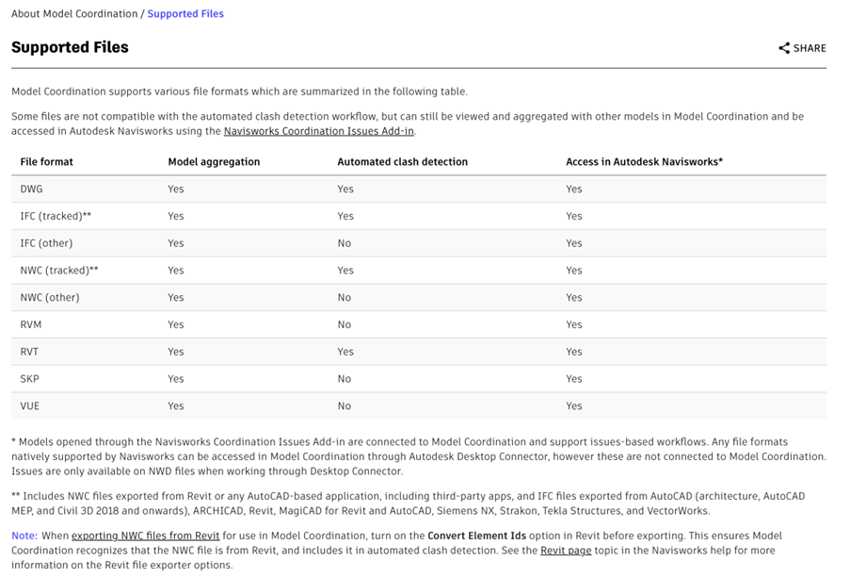Stay Ahead of Evolving Security Threats
Cybercriminals are always evolving, and so should your defences. This month, we shine a spotlight on three often-overlooked yet critical security concerns that could put your business at risk.

In recent years, the word “collaboration” is squeezed into any and all conversations on improving organisations in the AEC industry, and indeed the industry as a whole. And rightly so. Many common historical problems in the industry can be linked to failures in collaborative efforts, which isn’t surprising. Projects involve multiple parties, constantly exchanging masses of information over time (often years), in varying formats, via varying workflows and practices and in alignment with a host of requirements. How could everything possibly be done right? Well, honestly, it can’t. But we can certainly get the rate of error much closer to zero and reduce the impact of misfortune when it does strike. How, may you ask? Through skill, and tools.

One such tool is Autodesk Construction Cloud (ACC). ACC is a powerful collaboration platform that allows AEC professionals to work together seamlessly across different the disciplines. The platform provides a range of tools and features that enable team members to share information, communicate effectively, and collaborate on project tasks, from Design to Operations. We discuss below how ACC can be used across disciplines to improve communication and collaboration (and there is that word again!).
As the Common Data Environment for ACC, Autodesk Docs holds some very valuable tools that help teams coordinate in a variety of different ways.
You are able to utilise Transmittals to notify other teams of updates, and Permissions to enable teams to view only the information that is correct and relevant to them. Markup and Commenting lets stakeholders have input on documents including drawings and models, where previously they may have needed specialist software licencing and knowledge to have their say. Issues is the centrally accessible tracking and resolution tool, that can be customised for different types of Issues (like Fire) and even linked to Revit allowing pins flagging clashes or other items to be shared directly from other teams using the free add-in.
And of course, everything is versioned in Autodesk Docs with the ability to view older revisions of files, and even roll back to one of these revisions. This also allows the ability to compare versions of drawings and models, to fully understand the impact of any changes made.
Design Collaboration’s purpose is to tackle the time old problem of using incorrect or out of date information from other teams. The focal point of the module is the swim lanes, which effectively visualise when “Packages” are shared by each design team. Depending on the appearance of these “Packages” on the swim lanes, it both indicates the high-level contents and whether your team has retrieved the information to your own folders, in a process called “Consuming”.
These features enable teams to control the flow of their information, both ingoing and outgoing, and monitor changes in an easy to manage, visual based environment.
Concentrating more on the 3D aspect of working with other teams, the Coordination module enables teams to run both cross-discipline and internal clash checks, updating automatically when new models are uploaded. This can be done across a range of formats (detailed below), meaning coordination is accessible to all parties, irrespective of the software they are using. Issues can then be created of items of interest found and assigned to internal or external teams.

If you are designing in Revit, these clash issues can be displayed and reviewed directly within the model, using the aforementioned issues add-in.
For those firms with embedded clash detection process in Navisworks, the add-in allows models and views to be opened directly from Model Coordination. Issues can be created directly in Navisworks and synchronised automatically with ACC.
Utilising the cloud sharing capabilities of Revit, Civil 3D and Plant 3D, Collaborate Pro allows workshared models to be hosted on ACC. Collaborate Pro users also have all the benefits included in Design Collaboration and Model Coordination.
Autodesk Build provides tools that are commonly used in the Construction stage, from Project Management to Quality to Project Closeout. It can be used to manage project workflows, track project milestones, and communicate with internal or external team members. On-site teams can use Autodesk Build to manage inspections, issues, and tasks, ensuring that construction progresses smoothly and on schedule. RFI’s can be issued to communicate the need for additional information from the client or other stakeholders.
Autodesk Construction Cloud is armed with a myriad of capabilities to support AEC professionals in the industry across businesses to achieve a unified goal. If collaboration is key to you and your projects, and you’d like to find out how we have helped past clients in the ACC platform or BIM, and how we could help you, please get in touch with us to book in an appointment.
Cybercriminals are always evolving, and so should your defences. This month, we shine a spotlight on three often-overlooked yet critical security concerns that could put your business at risk.
A well-designed archiving solution ensures the long-term integrity, accessibility, and compliance of project information - preserving critical records while mitigating risks. In this blog post, we explore why data archiving is no longer optional, but essential, and introduce ArchiveHub
At Symetri, we understand the importance of tailored education and deliver exceptional training solutions, available both in our classrooms or through our unique Virtual Classroom. Here, we explore the many advantages of committing to a learning path with Symetri and how it can transform both personal and professional growth.
